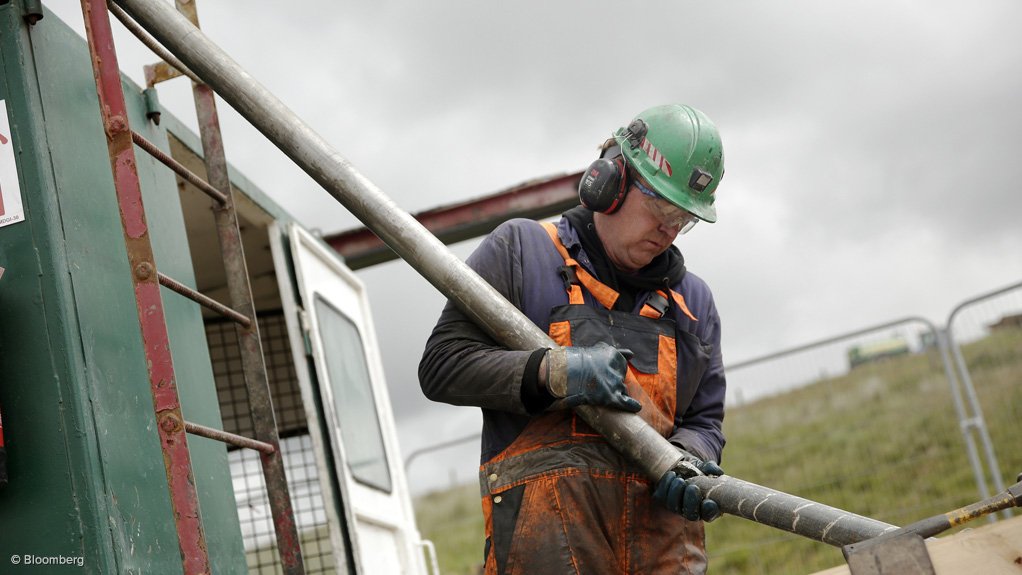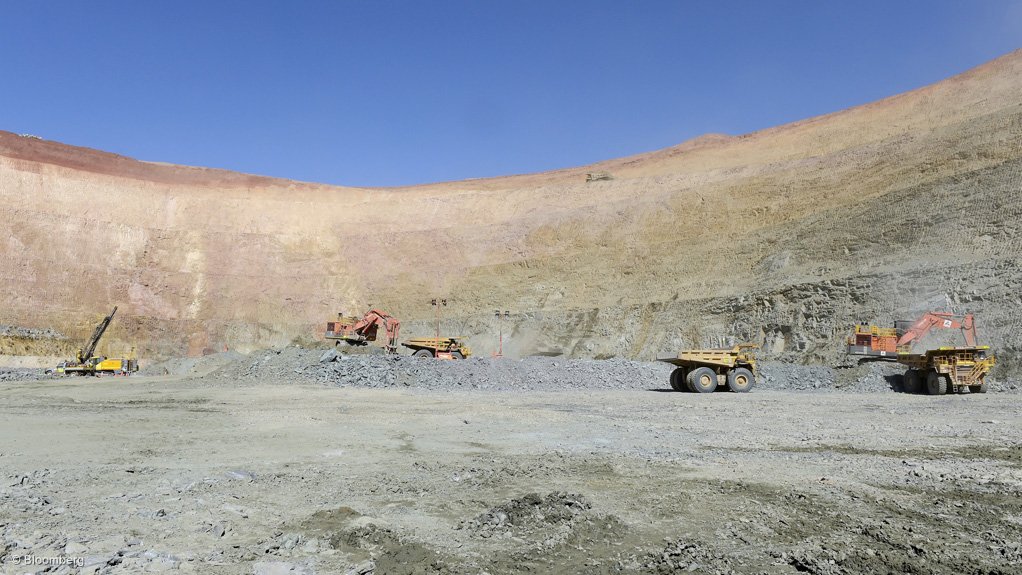Sonic drilling represents untapped potential for mining



ENHANCED EXPLORATION The high penetration rates of sonic drilling produce high-quality, accurate core samples
Photo by Bloomberg
OPERATIONAL EFFICIENCY Heavy minerals mining companies can capitalise on the benefits of sonic drilling in their operations
Photo by Bloomberg
There is huge scope in the future for the adoption of sonic drilling by mining companies in South Africa, which heavy minerals mining companies can capitalise on, says exploration drilling industry training course provider Colin Rice Exploration & Training founder Colin Rice.
Local use of sonic drills has not proliferated because they are expensive, but the advantages of the technology can outweigh its cost, he states.
Presenting on the first day of the Geological Society of South Africa’s three-day Drilling Methods and Techniques in Resource Delineation course on February 22, in Muldersdrift, Gauteng, Rice described sonic drilling as “an amazing drilling method with significant potential in drilling unconsolidated materials”.
He noted that sonic drilling offers exploration and mining companies a significantly efficient drilling method, boasting extremely fast penetration rates up to four times faster than those achieved using conventional drilling methods.
Owing to these high penetration rates, core samples produced during exploration are of a “very high quality”, further allowing for the production of accurate samples required by exploration companies.
The method also eliminates the production of cuttings, which is associated with rotary, percussion or auger drilling methods. Therefore, using a flushing system, a mud pump and a compressor – which remove cuttings – is not necessary.
As there is no cutting involved, the sample is not contaminated by drilling fluids, there is no mess on the surface and diesel fumes from a pump and compressor are also eliminated. Moreover, this reduces the need for the rehabilitation of mining sites.
Rice commended the sonic drilling method, as heavy minerals mining companies could benefit from using this method to reduce the environmental risks associated with conventional exploration drilling methods.
Meanwhile, he said during the presentation that a sonic drill could be used to produce a core sample or drill an open hole merely by changing the design of the drill bit.
Rice conceded, however, that there were limitations to the sonic drilling method, with sonic drill rigs having “very definite depth limitations”. Owing to the hole-making mechanism, the equipment will reach a depth limit where the friction generated is too great and insufficient energy is available to continue drilling.
In noting the two variations of sonic rigs – a rig that vibrates and rotates, and a rig that only vibrates – he said the former was necessary for harder formations and the latter for soft unconsolidated rock, thereby positioning the latter as ideal for heavy minerals mining.
Innovative Method
Sonic drilling was developed in the 1950s in the US by geologist Ray Roussy who was trying to find a way to drill really soft unconsolidated rock, said Rice, adding that the principle was “very, very simple”.
It involves attaching a drill bit to the bottom of a drill string. Instead of rotating the bit and applying load as is the case in other drilling methods, such as percussion drilling or rotary drilling, Roussy hypothesised that the drill bit could be vibrated extremely quickly.
Subsequently, he built a system whereby sonic vibration was achieved using two eccentric lobes, which are hydraulically counterrotated at 900 rpm, resulting in a vibration frequency of 150 Hz. Rice pointed out that 150 Hz is within a person’s ambit of hearing, making the “loud-pitched whine” when a sonic drill is in operation audible.
Sonic waves are transmitted through the drill string to the drill bit, which causes the drill string to lengthen and shorten 150 times a second. This high frequency of vibration down the drill string causes a thin layer of soil particles surrounding the drill bit to lose their structure and fluidise, literally vibrating the matter out of the way and thereby producing a hole.
Comments
Announcements
What's On
Subscribe to improve your user experience...
Option 1 (equivalent of R125 a month):
Receive a weekly copy of Creamer Media's Engineering News & Mining Weekly magazine
(print copy for those in South Africa and e-magazine for those outside of South Africa)
Receive daily email newsletters
Access to full search results
Access archive of magazine back copies
Access to Projects in Progress
Access to ONE Research Report of your choice in PDF format
Option 2 (equivalent of R375 a month):
All benefits from Option 1
PLUS
Access to Creamer Media's Research Channel Africa for ALL Research Reports, in PDF format, on various industrial and mining sectors
including Electricity; Water; Energy Transition; Hydrogen; Roads, Rail and Ports; Coal; Gold; Platinum; Battery Metals; etc.
Already a subscriber?
Forgotten your password?
Receive weekly copy of Creamer Media's Engineering News & Mining Weekly magazine (print copy for those in South Africa and e-magazine for those outside of South Africa)
➕
Recieve daily email newsletters
➕
Access to full search results
➕
Access archive of magazine back copies
➕
Access to Projects in Progress
➕
Access to ONE Research Report of your choice in PDF format
RESEARCH CHANNEL AFRICA
R4500 (equivalent of R375 a month)
SUBSCRIBEAll benefits from Option 1
➕
Access to Creamer Media's Research Channel Africa for ALL Research Reports on various industrial and mining sectors, in PDF format, including on:
Electricity
➕
Water
➕
Energy Transition
➕
Hydrogen
➕
Roads, Rail and Ports
➕
Coal
➕
Gold
➕
Platinum
➕
Battery Metals
➕
etc.
Receive all benefits from Option 1 or Option 2 delivered to numerous people at your company
➕
Multiple User names and Passwords for simultaneous log-ins
➕
Intranet integration access to all in your organisation




















